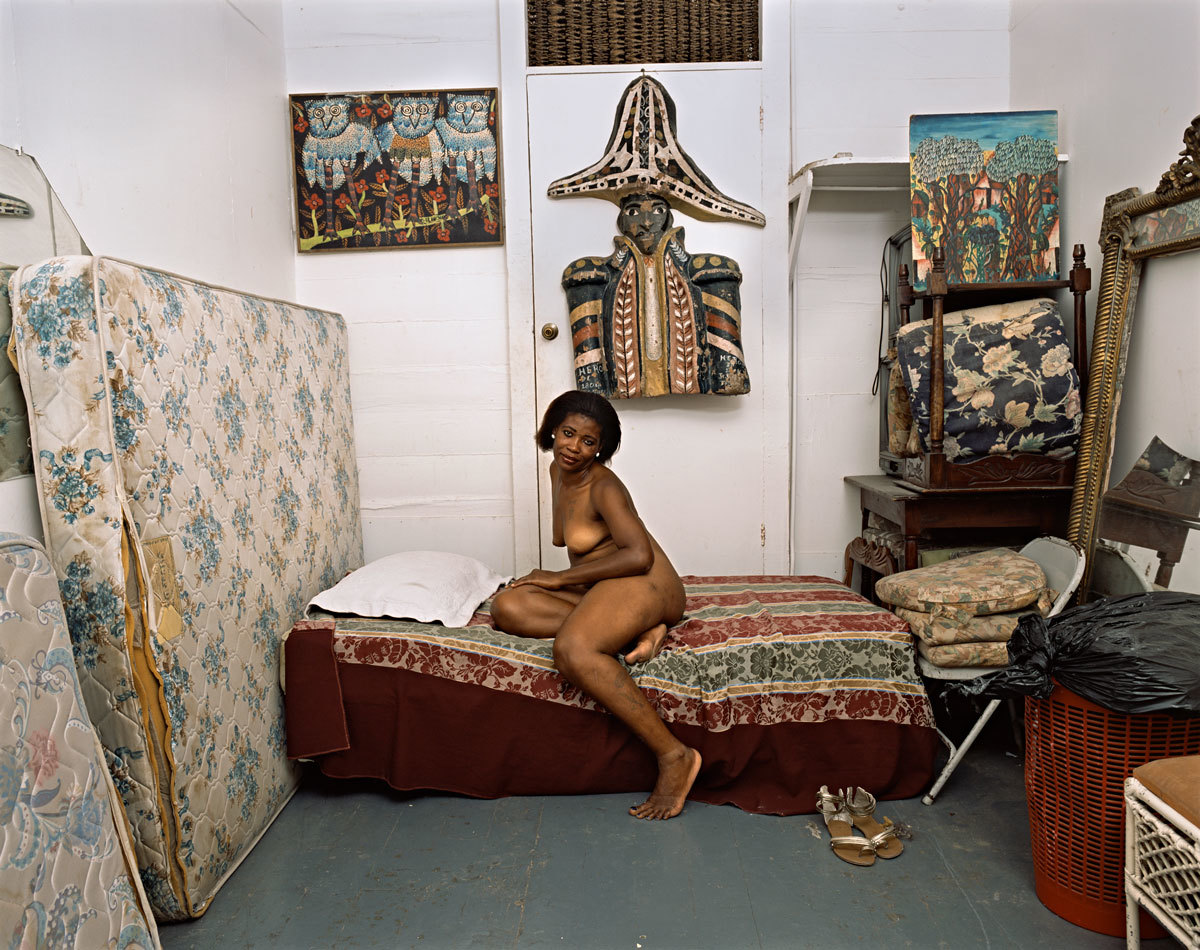“It’s necessary to continue to write our own stories, and stop having people tell our stories for us,” Mickalene Thomas explains. She’s at Miami’s Faena Bazaar, where she was signing copies of her book Muse. Known for her large-scale photography and rhinestone-encrusted paintings that put black women center stage, the New York-based artist has just curated a new group exhibition in the city, to coincide with Art Basel. Tête-à-tête at David Castillo Gallery examines mythologies of the black body as constructed in visual media, with photography and film works by 14 artists including Xaviera Simmons, Derrick Adams, Clifford Owens, and Thomas herself.
Now in its sixth iteration, the tête-à-tête series started in 2012 as a way to create an intergenerational conversation between artists across the African diaspora — often Mickalene’ peers, mentors, and mentees. Previous iterations have taken the form of exhibitions and events, but also publications. “I’m interested in ways of understanding collaboration,” she explains. “For me it can be one artist starting a discourse that brings other artists into the conversation. As I look at art in the world, and meet new artists, the conversation changes, it grows.”
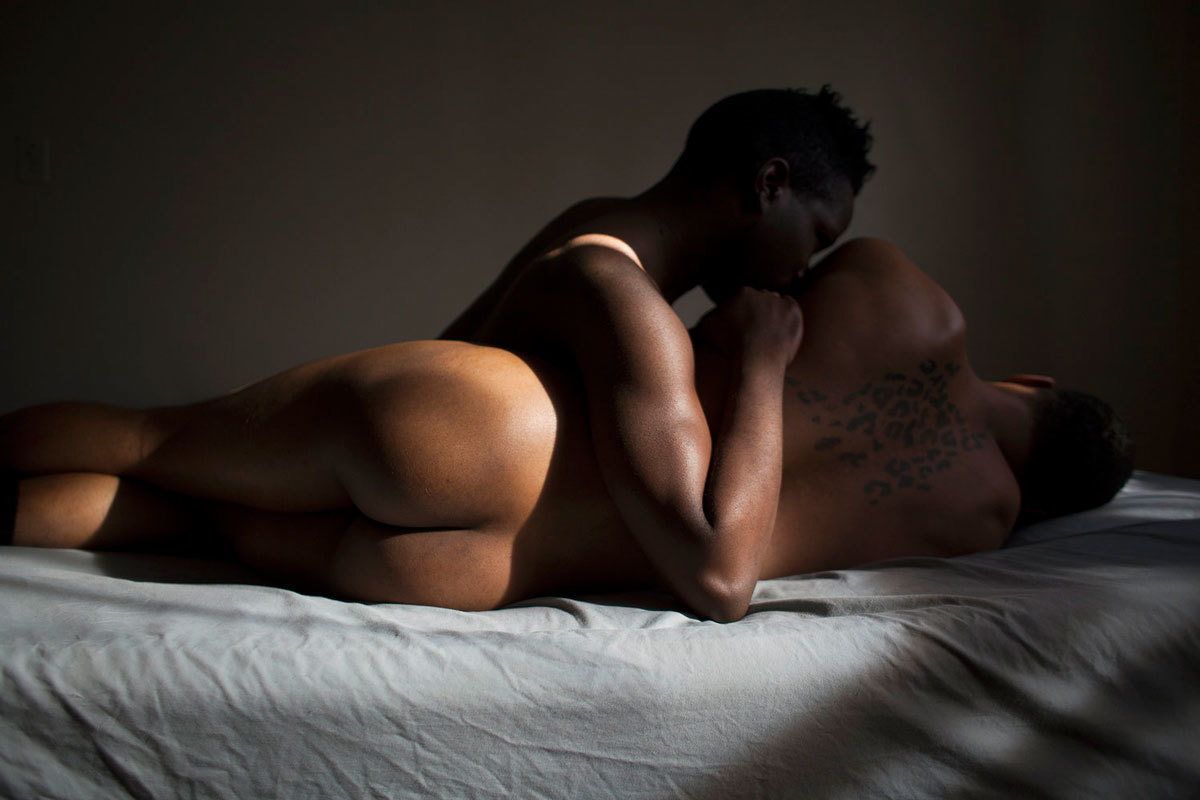
The exhibition takes inspiration from Ariella Asoulay’s theory of the Civil Contract of Photography. The Israeli filmmaker argues that photography enables anyone to pursue political agency and resistance. The works brought together by Mickalene certainly engage their subjects in direct yet understated ways, leaving the viewer feeling invited, exposed, or simply touched. “Photography has always been a tool where you go into a community and say ‘this is how they live’,” Thomas explains, slapping the table as she makes her point. “But what happens when that community use that tool themselves? Then the paradigm is shifted. That, for me is a radical and revolutionary act.”
One wall in the gallery is adorned by two large self-portraits by Renée Cox — one of the most controversial contemporary African American artists, and Thomas’s mentor. In TAXI from 1998, Cox appears in an urban setting as her alter-ego Rajé, an oversized Wonder Woman-like character who fights racism and teaches children African American history. Meanwhile, in HOT-EN-TOT from 1994, she stands naked, wearing caricaturesque prosthetic breasts and buttocks in reference to the 19th century colonial figure of the Hottentot Venus, looking straight at the camera with an air of malaise. At first glance, the works are in conversation in their complete contrast — one is colorful, loud, and empowering; the other is black and white, vulnerable, and intimidating — but both point at “a stereotypical eroticism of the black body,” argues Thomas.
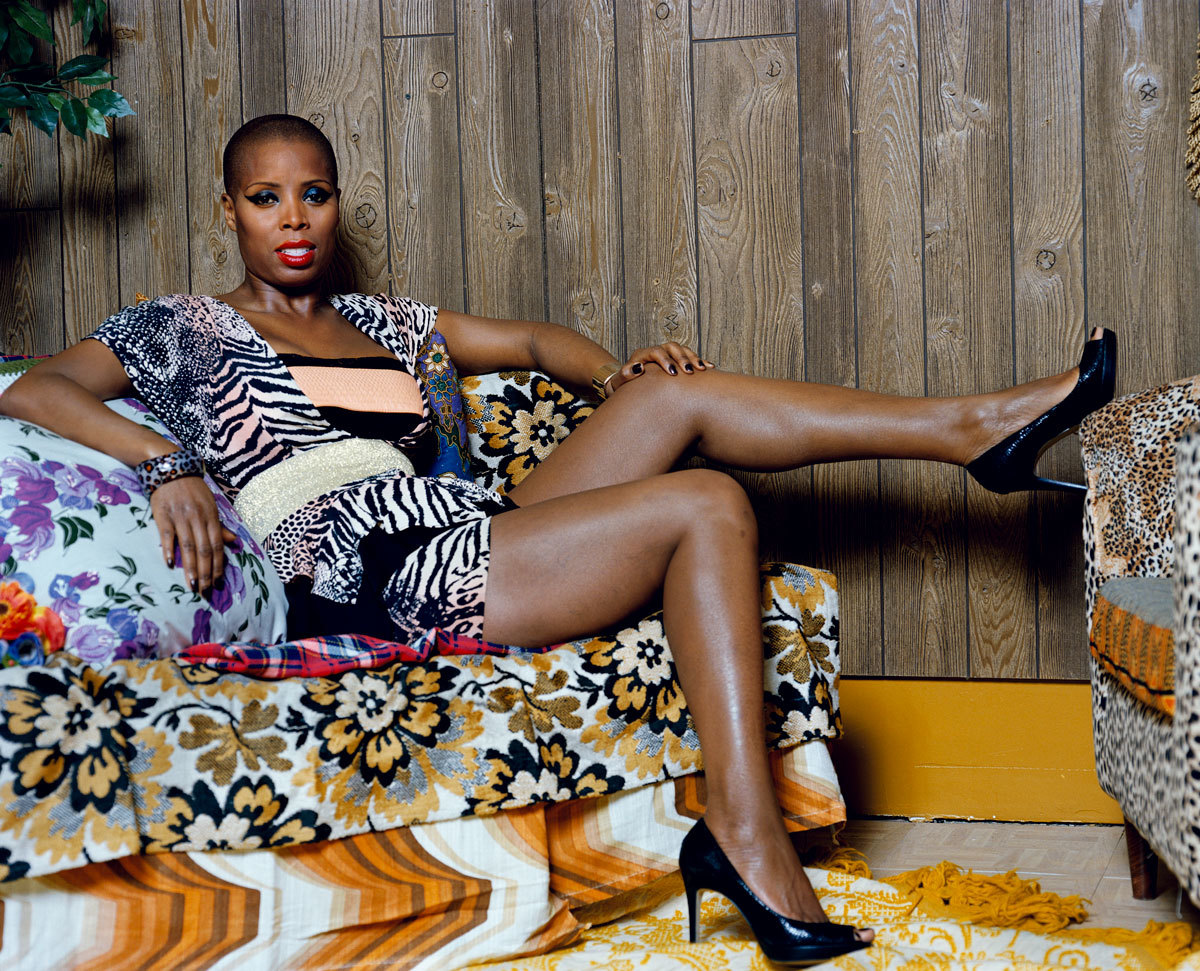
Also featured in the show is work by Deana Lawson, the artist behind Blood Orange’s instantly iconic Freetown Sound album cover. Lawson is known for photographing complete strangers in their environments, with a distinctly raw, social realist sensitivity. Taken in Port-au-Prince, Haiti, Hotel Oloffson Storage Room depicts a woman, nude, gazing into the camera while lying sideways on a worn mattress surrounded by discarded objects. “I could look at that photograph and find something new each time I see it,” Thomas states, with excitement. “What is wonderful about Deana is that she goes into these environments and becomes close to these individuals. She has a way to get them to unveil their vulnerable selves to the world and to share who they are. They are open-ended stories.”
At 27, John Edmonds is the youngest artist in tête-à-tête. “I went to see a show of his in Bushwick, it was amazing,” Thomas begins. “I already had the list of artists scheduled and I said ‘hey I want to put you in this show.'” In the picture, two young black men are shown in a tender moment of intimacy, one lying down in a fetal position, the other reclining over him protectively. A ray of light poetically strokes the couple’s skin, giving the photograph a sacred feel. “With a young queer black eye, John brings forth the light, the softness of the black male. In a time like this, to show that love is needed and necessary. Because we look at the black male in this other, monstrous, machismo way, right?”
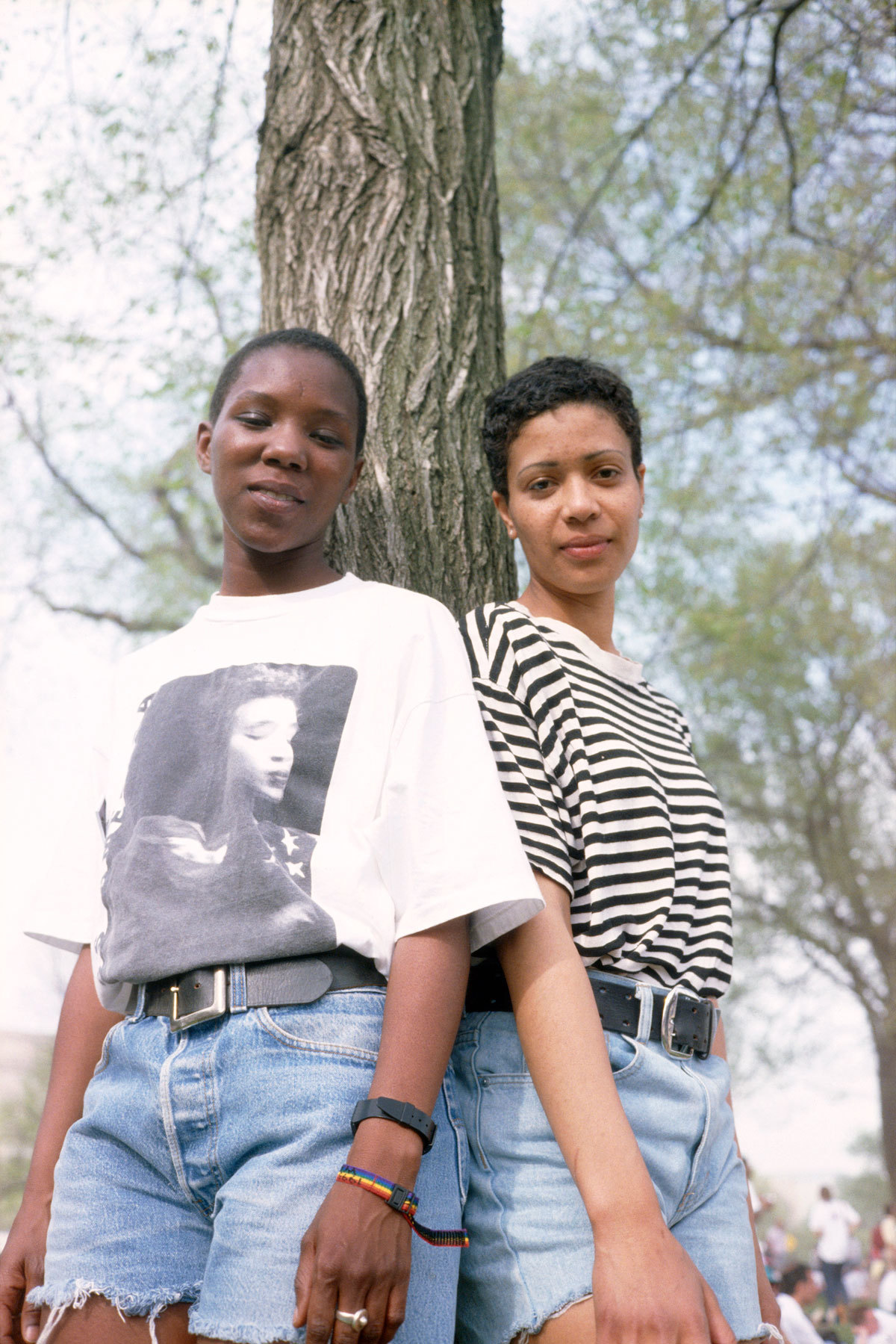
With racism increasingly legitimized by the rise of populist movements in the wake of the Trump election and the Brexit referendum, and white supremacists accessing some of the highest positions of power in the US, platforms like tête-à-tête — which provide creatively challenging discourses around the black body — in broader conversation with the Black Lives Matter movement, become essential. “Art is for me always a political act,” says Thomas, “artists are very powerful people in that they can help shift how people see the world.”
And institutions have a role to play too. In recent years, exhibitions like the Rubell Family Collection’s 30 Americans or the Philadelphia Museum of Art’s Represent: 200 years of African American Art, are celebrating the achievements of African American artists and the expression of collective identities. Meanwhile, tête-à-tête has toured many universities’s museums, and Thomas is planning a major program at Spelman College in Atlanta.
“The conversation is not over, it becomes more and more timely,” she says, “we’re only battling these things because they’re not resolved, and that’s why the discourse has to be open.”
Tête-à-tête runs until January 31, 2017 at David Castillo Gallery, Miami
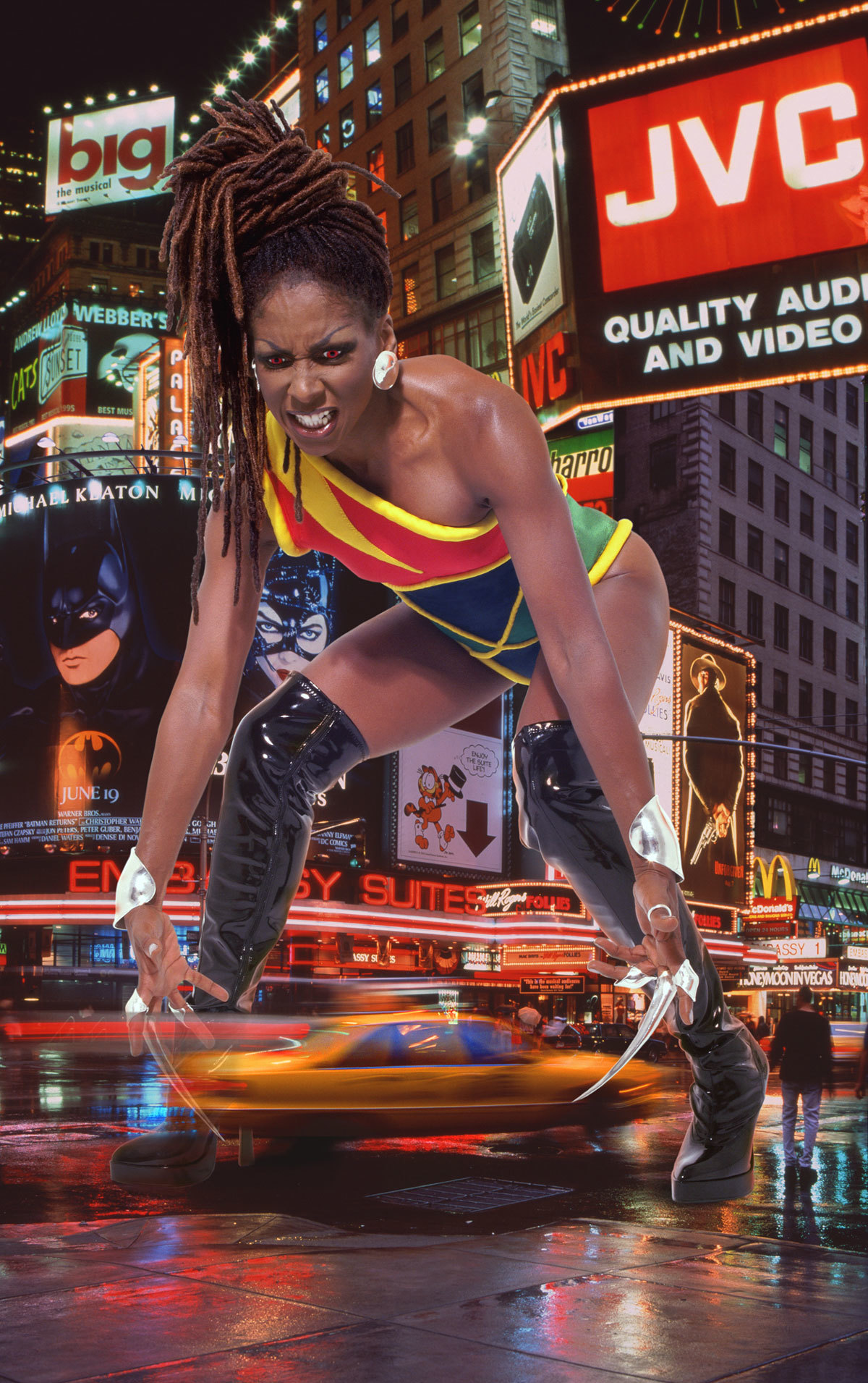
Credits
Text Benoît Loiseau
